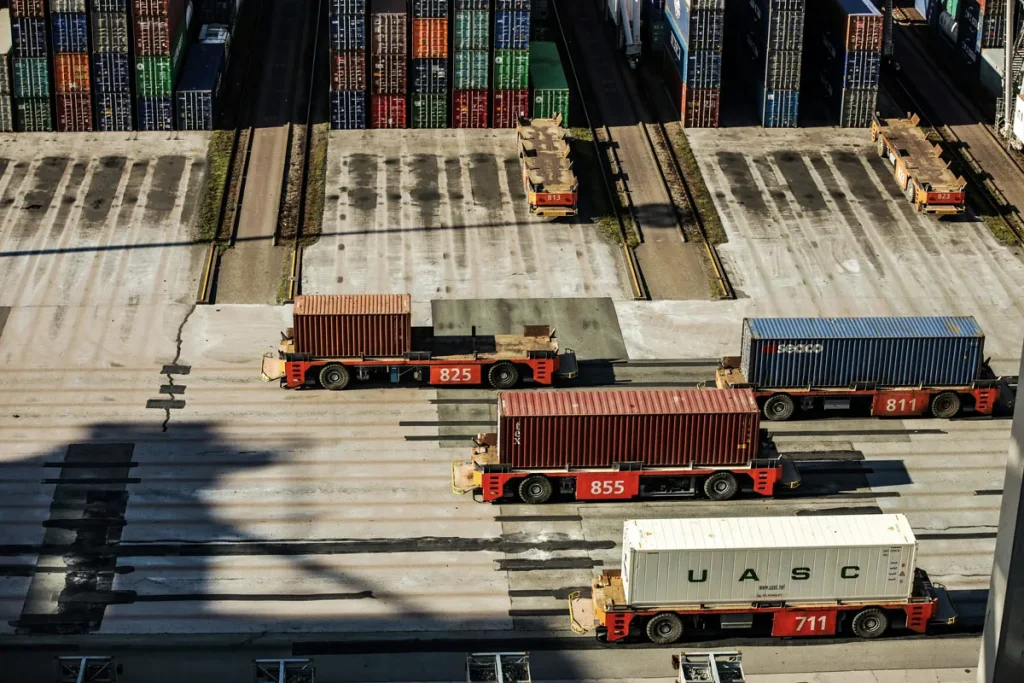Intermodal transport plays a crucial role in global trade, offering efficient and sustainable logistical solutions. This article presents various successful case studies that illustrate how adopting innovations, sustainable practices, and efficient operational strategies have led to significant results in the sector.
Success in intermodal transport not only stems from operational efficiency but also from continuous innovation and a commitment to sustainability. The following case studies demonstrate how different industry operators have achieved significant goals through targeted strategies.
Technological innovation
Terminal automation
Case Study: port of Rotterdam
The Port of Rotterdam, one of the largest and most advanced in the world, has implemented complete automation systems in its intermodal terminals. This has allowed for faster and safer container handling, reducing wait times and improving overall port operation efficiency.
Autonomous vehicles and drones
Case Study: DB Schenker
DB Schenker, a global leader in logistics, has introduced the use of autonomous vehicles for container transport within its terminals, along with drones for inventory monitoring. These innovations have led to more efficient warehouse management and improved workplace safety.
Operational efficiency
Dynamic traffic flow management
Case Study: Ferrovie dello Stato Italiane
Ferrovie dello Stato Italiane has implemented an advanced system for the dynamic management of rail traffic flows, integrating real-time data and predictive analysis. This approach has significantly improved the efficiency of intermodal rail transport in Italy, reducing delays and optimizing resource utilization.
Sustainability and environmental impact
Innovative container materials
Case Study: Japan Railways Group
Japan Railways Group has introduced freight containers made from innovative, lighter, and more durable materials. These containers not only reduce fuel consumption for transport but are also fully recyclable, demonstrating a commitment to more sustainable solutions.
Digitalization and transparency
Blockchain implementation
Case Study: IBM and Maersk
IBM and Maersk collaborated to develop TradeLens, a blockchain-based solution for the maritime transport sector. This platform provides unprecedented visibility across the supply chain, improving transparency, security, and efficiency of intermodal transport operations.
Supply chain resilience
Creating flexible logistics networks
Case Study: Amazon
Amazon has developed one of the most resilient and flexible logistics networks in the world, leveraging technology and in-depth data analysis to quickly adapt to demand changes and supply chain disruptions. This approach has allowed Amazon to maintain a high level of service even in the face of significant logistical challenges.
Challenges and opportunities
Harmonization of international standards
A common challenge emerging from these case studies is the need to harmonize international standards to further integrate intermodal transport. Overcoming these regulatory barriers will require ongoing collaboration between governments, companies, and other international organizations.
Investment in research and development
Another opportunity highlighted is the investment in research and development to promote innovation in the sector. Through strategic partnerships and targeted investments, companies can explore new technologies and operational practices that could further revolutionize intermodal transport.
Conclusions
The case studies examined offer valuable insights into the strategies that have driven success in intermodal transport, highlighting the importance of innovation, sustainability, digitalization, and resilience. While the sector continues to face challenges, the commitment to operational efficiency, environmental impact, and strategic collaboration remains fundamental to realizing the potential of intermodal transport. These examples not only demonstrate what can be achieved but also serve as inspiration for other companies in the sector, emphasizing that through innovation and collaboration, challenges can be overcome, and new opportunities for growth and sustainable development can be unlocked.

